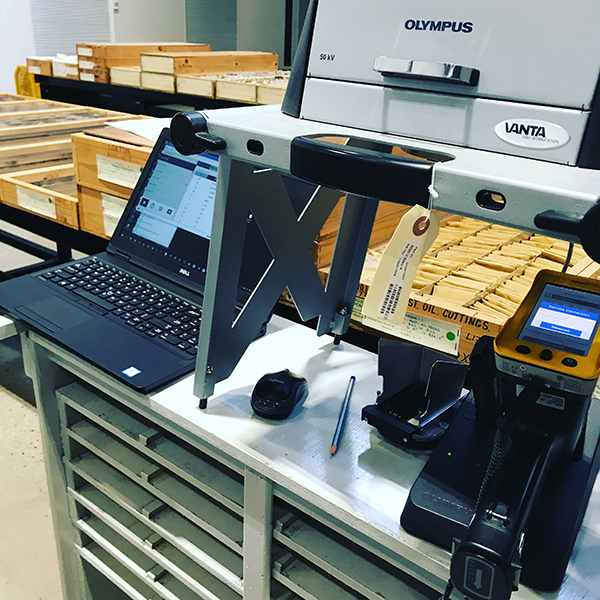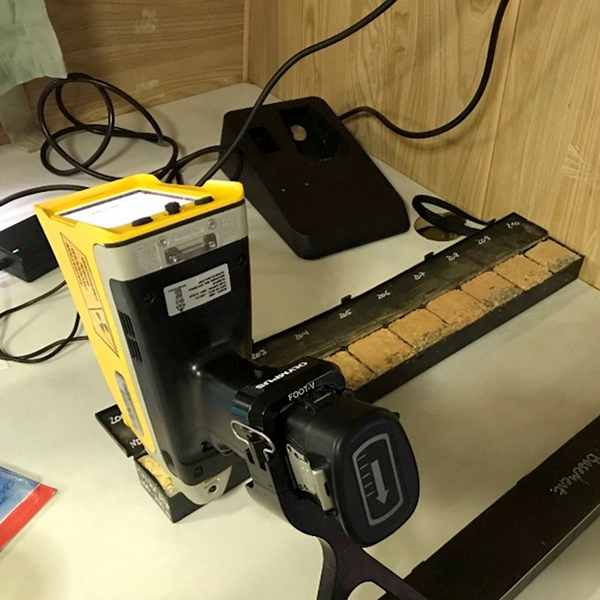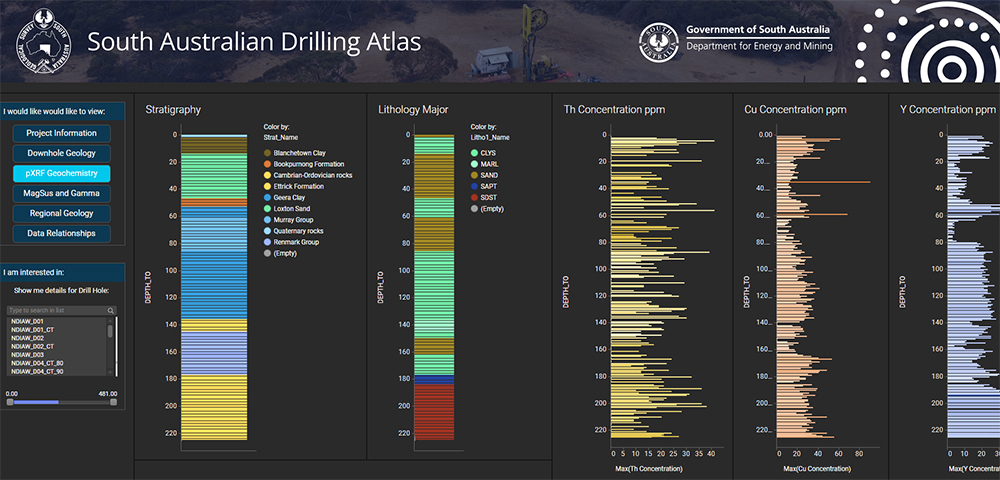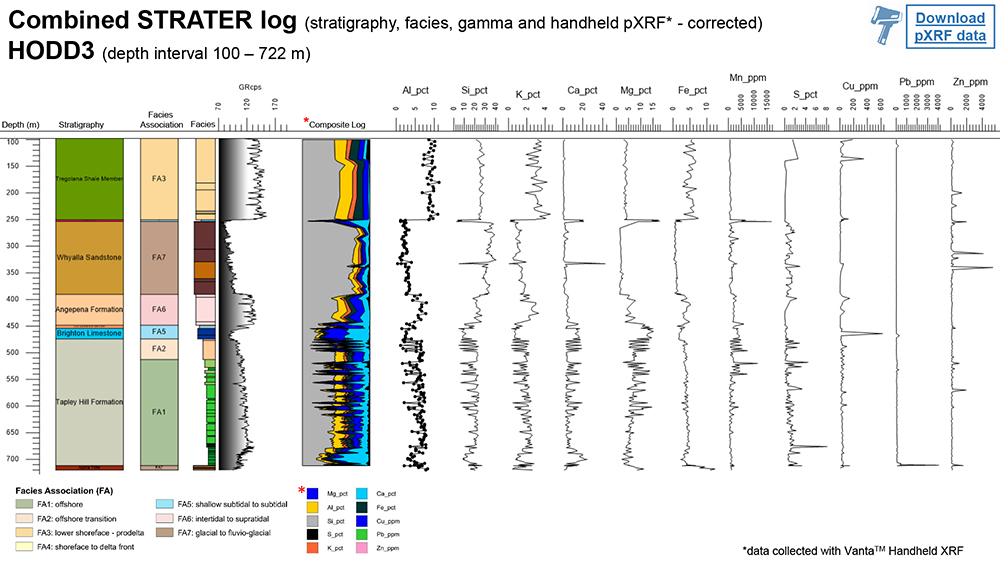The portable XRF (pXRF) geochemistry project is an ongoing initiative by the GSSA to provide a framework for fast, effective, non-destructive geochemical analysis of South Australian cover, rock samples and drill core, and ascertain the relationship between the geochemical data, lithology, and stratigraphy in current and future project work.
Project summary
X-ray fluorescence (XRF) is a key field technique for mining and environmental applications. It is an analytical technique that returns information about the elemental composition of a sample, such as drill core, powdered rock or a hand specimen. In XRF, an x-ray is beamed at the sample. When the atoms are struck, different energies of x-ray are emitted in response. The spectrum of the emitted x-rays helps to identify which elements are present.


The ease of use for collecting rapid geochemistry using a portable XRF (pXRF) instrument allows the GSSA to provide near real-time support for operational field decisions. Portable XRF instruments are readily used for many of the programs based at the South Australia Drill Core Library.
The wealth of geochemistry data has been greatly increased in the past five years. Case studies that have used pXRF for rapid analysis include:
- Delamerian National Drilling Initiative (NDI) XRF study of Murray Basin regolith and basin sediments
- Delamerian National Drilling Initiative (NDI) downhole portable XRF geochemistry module within the South Australian Drilling Atlas

Project diary
June 2023
Dr Anna Petts presented Getting the most out of downhole data: integration of pXRF, geophysics, and geology to aid geological enlightenment at the Australian Earth Sciences Conference in Perth this month which used National Drilling Initiative (NDI) data.
Portable X-ray fluorescence (pXRF) instruments are a game-changer for drilling and sampling campaigns. These powerful tools provide valuable geochemical data, but we've taken it a step further, combining pXRF data with other datasets like magnetic susceptibility, gamma, conductivity and density.
The poster focuses on the pXRF data collected during the MinEx CRC Delamerian NDI program, which integrated pXRF geochemistry with geological logging and downhole petrophysical data.
More information on pXRF
- Delamerian National Drilling Initiative (NDI)
- Workflow for the NDI sampling
- Sedimentary Copper Project
The project has used results from the recently completed logging of 10,570 metres of drill core from the Stuart Shelf. This has included collecting thousands of points of gamma data, pXRF and core photography. The pXRF data can be accessed via the individual drillhole summary reports.


